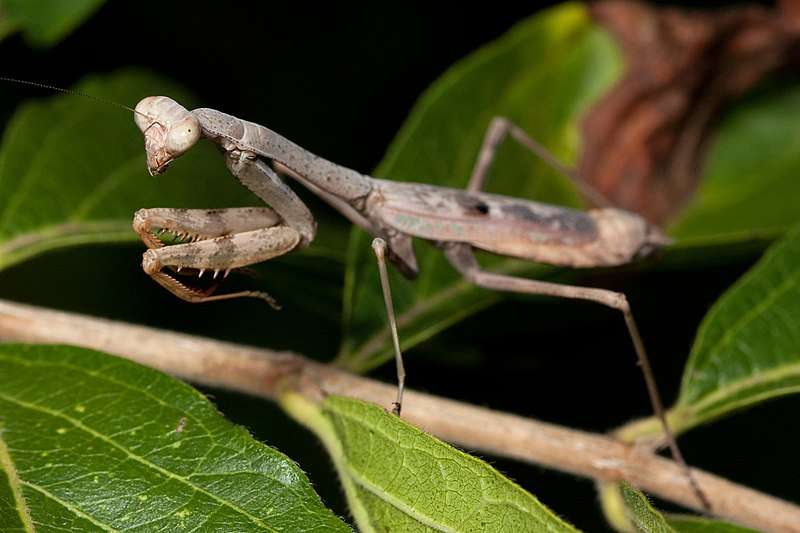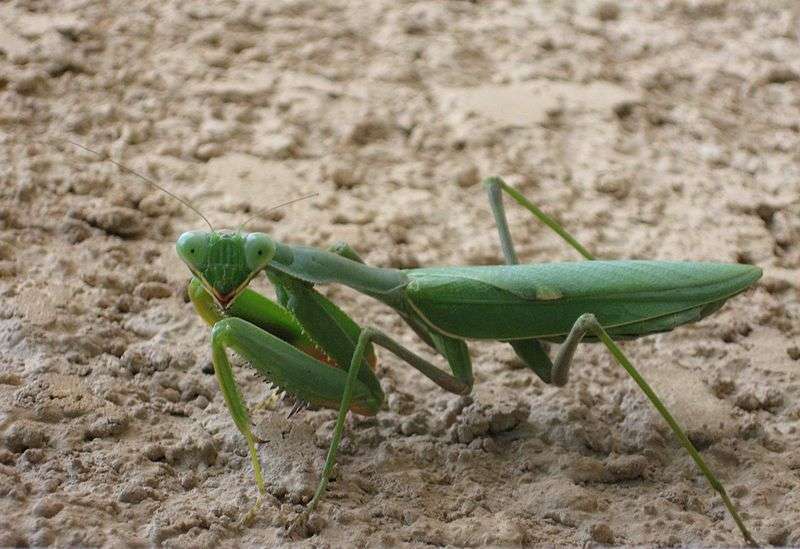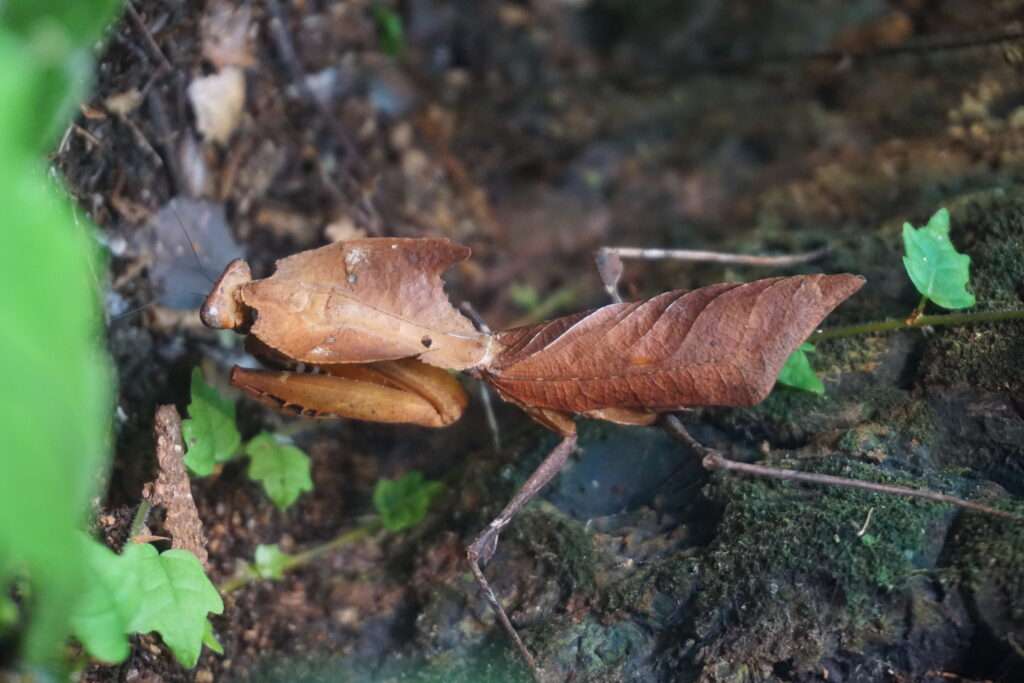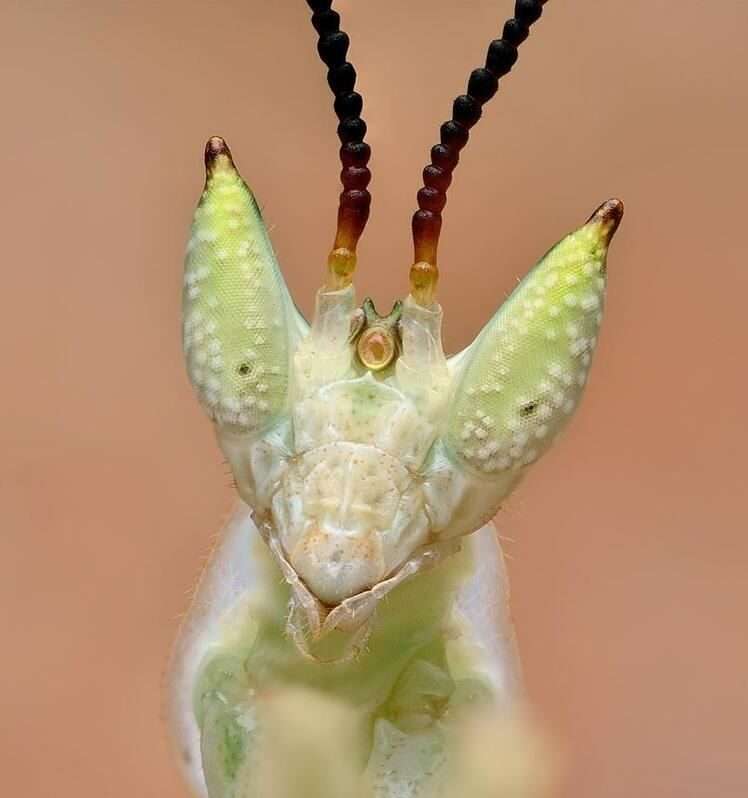
Description
Scientific Name: Stagmomantis carolina
Lifespan: 10 months- 1 year
The Carolina mantis has a big head and belly and can reach a maximum length of 4–7 cm. They have two enormous forelegs that are folded back like a pocketknife and are spiky, serrated, and large in size. Tannish-brown is the colour of the body, while the wings are pale green. To catch prey, they hold their forelegs up in a praying stance. Adult males have longer wings than females, and they are smaller and more slender.
Habitat
Southern North America includes the states of New Jersey, Illinois, Missouri, Texas, Arizona, and down through Mexico to Central America, where this species can be found. In woodlands and meadows, particularly around flowering plants, mantis are common.
Behavior
Mantis are often fairly sedentary creatures that may spend their entire lives in a single meadow or on a single tree. As long as there is a sufficient supply of food, they will remain in one location. Males begin to wander around more in the late summer as they search for potential partners. Males typically fly more than females during the night. A flying mantis will land or alter its flight path if it hears high-frequency sounds used by bats to hunt. Mantis have “ears” on their bodies that can detect these sounds.
Keeping as a Pet/ In Captivity

Temperature and Humidity
The excessive humidity and temperatures of the state bearing its name are nothing new to the Carolina Mantis. So the optimal conditions for them are 70°F to 85°F temperatures and 70–80% humidity levels.
Naturally, you’ll need regular misting to achieve such climatic conditions, and adequate ventilation is also necessary to keep the animals healthy at those temps.
Substrate
One or two inches of substrate will be plenty to keep the CM comfy because they don’t require much of it. When they’re nymphs, some individuals use moist paper towels as a substrate to maintain the humidity.
An appropriate substrate is preferred to keep them comfortable and content as they mature into adults, though. Topsoil and peat moss are great for retaining moisture, so you can use combinations of the two.
A bioactive enclosure is another option, in which case you need include organic soil to maintain the health of the plants.
Tank Setup
Ventilation is crucial when choosing the right enclosure for your Carolina Mantis. If the walls of your tank are solid, make sure that at least 20% of them are made of mesh or have ventilation holes in them.
The optimal tank’s dimensions should be at least three times as long and as high as the mantis itself. Additionally, it must to be twice as wide as a mantis. However, it’s best to acquire an even bigger tank to offer your CM more room.
This species enjoys the ability to climb and conceal as decoration. Always keep a branch or twig inside the enclosure for the animal’s comfort. In addition, silk plants or actual plants will enhance the tank’s aesthetic and make the mantis feel more at home, depending on whether you want a bioactive or sterile ecology.
Diet and Feeding
A Carolina Mantis is relatively simple to feed. Flies are a cheap and excellent option for keeping them healthy because they’ll consume any flying insects. Small fruit flies should be given to L1 and L2 nymphs. L3 and L4 nymphs adore large fruit flies, and houseflies or blue bottle flies are preferred by L5 to adults. Adult specimens also relish eating other tiny insects like grasshoppers and crickets.
Feed them once every three days for as much as they can consume, and pay close attention to the size of their bellies to ensure that you are not feeding them too much or too little. You’ll be able to tell if their abdomen is healthy if it doesn’t become overly flat or thick.
Moths and other small flying insects can be added to their food to modify it, but never crickets because they frequently contain viruses and germs that can be fatal to mantis.
Table





